|
With anything approaching luck we should all get a chance to check out the cinematic adaptation of Max Brooks' World War Z in 2013. Hey who isn't looking forward to this movie, I mean the book rocked, the whole concept of zombies on a global scale is cool, and Brad Pitt might get to battle the undead and win back some street cred. Naturally the Studio has been releasing the odd snippet to whet our appetites for undead shenanigans. I'm pretty much hyped and from what various "sources" are saying we should be in for a good time. However, always a "however" you'll note in modern Hollywood horror film making, one aspect of the movie hasn't exactly meet with universal approval. Director Marc Forster is going with fast moving zombies rather than the shamblers I, and many others, were expecting. Some debate was to be had on the subject with quite a number of people declaring the film was now dead for them, am assuming there was no pun involved in that and similar statements. Which got me to thinking about the whole horror geek debate on what a zombie is, and which type was scarier when it came to late night movie fodder. While realising the debate is on par with the hoary old argument about "who would win in a fight between Michael Myers and Jason Voorhees", it did get me to consider defining once and for all what constitutes a zombie. So in this article I'll ramble on about the history of the zombie, the major changes that have taken place in the sub-genre, and finish with tossing a live grenade onto the debate about running zombies. Don't expect a definitive guide to all things zombie cinematic. I'm simply going to hit some high points, hopefully point out a few things you didn't know, and get some debate happening. Let's check out what might be roaming the moors in the dark of night. Part 1 - "Your driver believed he saw dead men... walking". While the zombie flick has become pretty much a staple of modern horror film making, it surprisingly remains as one of the very few self-invented cinematic monsters on our screens. While most other classic monsters have a history in literature or folk lore, the zombie is almost entirely an invention of the cinema industry, which naturally has to eat its own. Consider for the moment the number of zombie flicks being made each year, then consider when was the last time a movie in the sub-genre actually did any good box office wise. I'm thinking of the remake of Dawn of the Dead as being one of the few instances of the decaying dead making an impact on the great unwashed. We may love to talk zombies, The Walking Dead may be breaking television records, but sure as Romero is going to make another Dead movie there isn't much happening at the cinema ticket counter. Maybe the teen demographics, the natural prey of horror cinema, aren't actually prepared to get into the dark truth behind horror, as Stephen King says, it's about death, and with death comes decay. I would hazard a guess that our next generation are simply too caught up in the celeb culture and the artificial charms of their latest i-gadget to really face their own mortality, and the aftermath of said demise. A reality driven television audience isn't apt to get down into the graveyard to see what happens, it's you know, gross. What's surprising therefore is the success of the first ever zombie movie, which naturally had nothing much to do with death, yet remained perhaps far more true to the ground zero, Haiti religious politics. 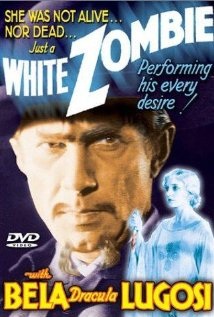
In 1932 maverick film makers the Halperin brothers, see nothing new in the dark genre - brothers were making movies way back when, were looking for some sort of monster for the horror movie they had planned. Clearly the motive here was success at the box office, horror was in the early 1930s on one of it's periodic surges. The problem for the Brothers Halperin was that they were pretty much back block toilers with all the good nightmares were taken by the majors like Universal Pictures. A recent magazine article had mentioned the whole zombie thing in relation to the then exotic Haiti and this proved to be a siren call for the Haplerins. Not only could they have an exotic "location", they could also go past a bit of a taboo line in the sand by having white folks at danger from a "native" practice, hence what must have at the time been a pretty lurid movie title White Zombie. Even better, since no one else had laid claim to the "zombie" there would be no pesky intellectual rights issues to combat. White Zombie revolves around 'Murder' Legendre, a local voodoo practitioner, who is creating zombies to work his sugar refinery. Legendre, wonderfully played by Bela Lugosi in sinister mode, agrees to zombify soon to be married Madeline Short Parker in order for plantation owner Charles Beaumont to have her for his bride. Beaumont is dissatisfied with the results, Madeline is pretty emotionless, and wants her returned to the land of the fully functional. Legendre, displaying his devious nature, then turns Beaumont into a zombie, adding to his already crowded stable, and takes Madeline for himself. It gets even sillier from there, with heartbroken Neil, Madeline's husband to be, and the sort of white Christian missionary that seeks solace in a bottle, going into battle against the thoroughly evil Legendre. For our purpose the rest of the movie isn't really that important, but if you haven't seen it then dial in, well worth a watch in my humble opinion. What should be noted is that the zombification process does not involve re-animating the dead, it involves giving the victim a potion to drink, and a healthy dose of mind control. Don't try this at home kids, I tried it on the family cat and I swear the creature has turned into a demonic hell spawn rather than going placid. So right from the cinematic kick off we are not talking the walking dead, the Haplerins remain pretty true to their source material, though clearly some liberties had been taken in the translation. Interestingly when the mind controller is removed from the equation his victims are returned to their former selves, well at least Madeline is as the budget didn't stretch to having extras also displaying post zombie distress disorder. 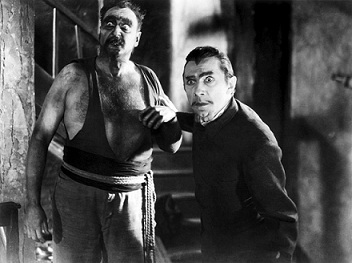
White Zombie proved to be a huge hit, convincing the Halperins they were onto a winner, that is until the commercial failure of their next zombie project, Revolt of the Zombies (1936). In this movie an oriental priest possesses the ability to turn men into zombies via a secret formula. Once again we aren't talking resurrected dead, we're talking mind altering (not in a good way) substances. Revolt was such a commercial disaster that the Halperins were unable to recover and the Major Studios smelt something slightly off in the zombie sub-genre. But at least the shambling zombie had gained a tentative foothold in the minds of movie makers and more importantly the developing horror audience. I'll reiterate our major point thus far, zombies were the human victims of formula wielding villians, they were at no stage the resurrected dead. Interestingly, for our purposes, Gerald Schnitzer included the whole zombie concept in the script for the at times confused Bowery at Midnight (1942). Director Wallace Fox simply couldn't make sense of a movie that surprises with its sheer inability to keep the plot lines hitting the right stride at any stage of the movie. While movie Distributor Monogram Studios was never likely to be a household name, with Bowery at Midnight they did arguably produce the best poverty row feature of 1942, and hey once again it starred genre legend Bela Lugosi. Surprisingly, for what should have been a simple crime filler, Bowey has one claim to fame for zombie enthusiasts that raises the movie beyond what one might expect. Bowery hinted at something even more gruesome than simple zombie servants. 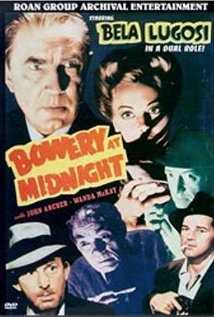
The movie centres on a Professor of Criminology, played naturally enough by Lugosi, who runs a soup kitchen for the down and outs in New York's Bowery district. However the kitchen is only a front for a criminal gang who commit a series of daring robberies and who are not above a spot of murder. When things don't work out with a gang member quite how our Professor wants he tends to knock them off and buried them in the cellar under the soap kitchen. In one of those weird movie moments that kind of make you wonder what people are smoking, the former henchmen resurrect as zombies! I kid you not, a standard crime feature devolves into having a zombie plot line for no apparent reason. What really interests us however is the implications that the zombies are not beyond taking a pound of flesh from the living when they get the opportunity. This is implied in a couple of scenes rather than Director Fox graphically portraying it. So back in 1942 we had flesh craving zombies, which from my research would be the first time zombie dietary considerations were committed to film. What is even more interesting, though I get the feeling it might be due to the confused nature of the script, is the fiancÚ who was zombified. He strangely returns to the living by the end of the movie, gets the girl, and in no uncertain terms spells out that she should stick to making babies and staying in the household kitchen rather than causing a lot of mayhem in places like the Bowery. How times have changed, for the better though? While the movie is confused about what it wants to say, proof positive none the less that zombies weren't necessarily dead and buried, or were they? Someone want to watch the movie and make a definitive statement, I'm going with not all zombies are equal or something ?!? Anyone else confused? Surprisingly while there were the odd zombie outings from the Majors it took the Independent Studios to nail a commercial zombie movie up to this stage. Bowery certainly kept the owners of Monogram Studios off the streets. Things would of course change when some of the heavy guns of cinematic horror crashed the zombie party. But the point here is that zombies attacking the living wasn't an original Romero concept, the cinema of the undead had the bases covered well before the auteur of the modern zombie flick started to write down script ideas. Equally the zombie as a resurrected creature was seeing the light of day, though of course in the interests of young love you could be cured of a zombie infection, which I guess precludes the notion that all the zombies in Bowery were dead. My brain hurts, I.m going to have a quick nap. 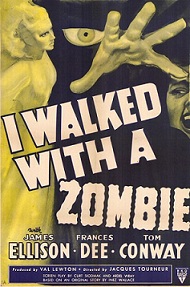
The next notable zombie flick, remembering this isn't a history of the zombie movie, is Jacques Tourneur seminal I Walked With a Zombie (1943). This movie is really one of the first zombie classics that horror fans hold up as a major statement that the dark genre can produce movies that can match the best of other genres. Not surprising it's a movie that was released by Universal, as the majors flexed their voodoo muscles for the first time. The Horror cinema had of course already produced a number of classic movies that could match other genre claims to art, but till Tourneur's venture into the zombie crypt those classic movies centred on the traditional monsters derived from literature, such as the Vampire or Frankenstein's monster. Betsy, a young Canadian nurse, gets a gig caring for Jessica, the wife of plantation manager Paul Holland. The bright side is the job is in the West Indies, the downside is the sinister aspect of voodoo has seeped out of the jungle and into the white world. Betsy somehow becomes convinced that Jessica can be cured via the local rites, which leads to an infamous midnight walk through the cane fields, and secrets being uncovered that may have been best left alone. Once again a white woman becoming the victim of strange native rituals was viewed as shocking to the establishment, a taboo line once again being crossed by the horror movie industry.While there can be no doubt that I Walked With a Zombie is one of the few horror movies that will work outside the dark genre with non-fans, our point of order here is the voodoo underpinnings of the enterprise. Once again we're talking people in somnolent states of being, induced by various magic practices and not the resurrected dead. Hollywood is keeping with the origins of the zombie, and building quite the mythology for movie makers to wrap their visions around. We might all look down our noses at a "picking up the white man's burden" notion prevalent in the early movies but there can be no doubting that surprisingly the beliefs of the practitioners of voodoo are being somewhat respected. Yeah I'm shocked as hell here as well, we are talking Hollywood right? By now you should be noting the rich history of the zombie movie that doesn't involve animated corpses wanting brains. 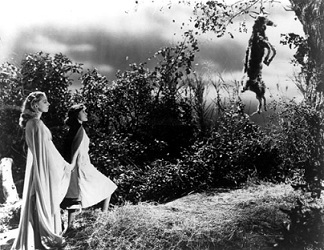
To finish this part of the article, can I call it that or should I just say ramble? - let's flash forward to 1988 and Wes Craven's The Serpent and the Rainbow. While the modern concept of the zombie, a wholly distorted view in my opinion, was raging Craven latched onto the origins of the cinematic monster and made the definitive statement on what we now call the "Trad-Zom", term copyrighted to Chuck McKenzie. The movie is interesting as it's the first time that a Director has taken time out of his busy schedule to film the actual zombie process, and also because it was apparently the last shamble of the traditional, almost tragic, figure from the Haitian roots. Craven is very clear in his definition of the zombie as being a still living human who can be cured from his/her current state. Dennis Allan is a medical researcher who journeys to remote areas of the planet to find the sources of various tribal and religious brews which may aid the development of modern medicines. There is a rumour of a drug that renders the recipient totally paralysed but conscious, and which fools Doctors into the belief that the patient is dead. The drug is used in voodoo ceremonies in Haiti and could perhaps be the cornerstone of the zombie legend. It just so happens that Allah visits the Caribbean Island as things go surreal and a revolution breaks out against the tyrannical rule of dictator "Baby Doc" Duvalier. The key points in Craven's movie for this article are that the zombies aren't actually resurrected dead, and the zombie state is achieved via the powers of religious belief, drug consumption, and the black magic delivery of Practitioners of the archaic arts. There isn't a hint of the undead wanting brains, living flesh, or the notion of rising from the dead. The zombification process does involve the victim being buried, one feels more out of tradition than requirement, which may have given rise to the false belief that the definition of a zombie is a resurrected corpse. Craven nailed the origins of the "myth", jury still out there, and delivered a damn fine movie in the process. So even after Romero cast his large shadow over the whole zombie sub-genre movies were still being made featuring Trad-Zoms. 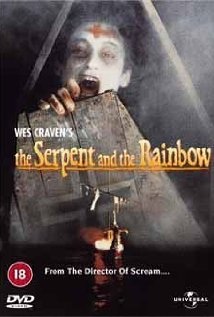
We all getting the bigger picture here? Zombie origins were less to do with resurrected dead and more to do with voodoo ceremony. While one movie hinted at the dead not liking the living the overall body of work viewed Zombies as being nothing more than automations that performed whatever duty their masters demanded. To a large extent the zombie is a tragic figure, with the real monster being the Priest who is creating the creatures. Shades of Mary Shelley's Frankenstein when you think about it. I've heard people in the genre holding forth that zombies can only be the result of resurrected corpses, sorry did you people not keep up with the development of the sub-genre, is sixty odd years of cinematic history now suddenly to be swept under the carpet due to a narrow minded bias toward the modern definition of what a zombie is? This speaks to me of a small minded mentality, of twisting the facts into a round peg to fit into a square hole. Even worse, the acceptance of a narrow definition forced on the dark genre by those outside the genre who really don't understand its workings, it's history, or the actual "reality". The zombie was never an undead maniac, that's something the Critics created and the sheep within the genre blindly followed, in much the same way as they accepted "the final girl" concept that never really existed in the first place. In short, the problem with the horror community at large is they take on board some pretty stupid ideas as being fact, because by and large the community is made up of the sort of person who deserves the movies that Hollywood are currently pumping out. In short the sort of person who doesn't think, come to think of it hello to the real world zombies. Here I exclude ScaryMind readers who have of course been exposed to all sorts of heretical views on the dark genre. You might not always like what this site has to say, but at least we hope it's helping you to think rather than blindly following the "set in stone" crap that flows like sewage out of the American industry. Anyone that argues that the zombie must adhere to the concept of the modern definition has clearly no knowledge of the history of the sub-genre. The zombie has been around in cinema for a long time now, has gone through various evolutions, and has diverted into various different forms as consumer preference has impacted via ticket and disc sales. However to claim with the sort of narrow minded zealot fanaticism displayed by some sources that a zombie can only be a resurrected corpse completely displays a shocking degree of ignorance for mine. Through the course of this three part article I not only hope to break a few preconceived notions but to also point out the absurdity of the arguments some people are presenting for their narrow minded views. I think we have had conclusive proof in Part 1 of the series that the Trad-Zom is the origin of the beast, and that origin did not involve resurrected bodies. 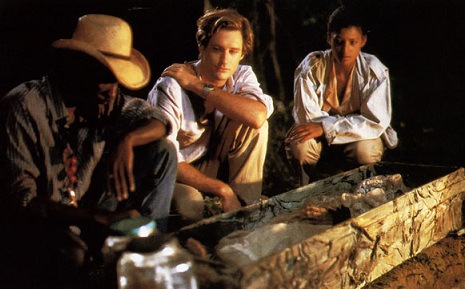
While I'm pretty happy with the Trad-Zom approach to zombies but it has to be said that with a couple of exceptions the sub-genre wasn't all that successful through to the 1960s. While Vampires, Werewolves, Ghosts, et al, were regularly turning a dollar at the cinema, the Zombie was largely being left shambling along in the shadows. That was all about to change in dramatic fashion as a group of commercial advert makers took to the Pennsylvanian back roads to film a shocker featuring ghouls, and it's here that the real zombie war begins. There are two further parts to this article, which I hope is enough to cover the subject matter at hand. In the next part we touch bases with the modern Rom-Zom version of our cinematic monster and cast further light onto a deception that has been unknowingly supported by almost the entire horror community. Before finally in the third part of the article we tackle the much derrided concept of the infected being a post-modern form of the zombie. It's going to be a rough ride, but the truth is out there and we're all about highlighting the reality of our beloved genre. Till next time remember, shot them in the head. |

